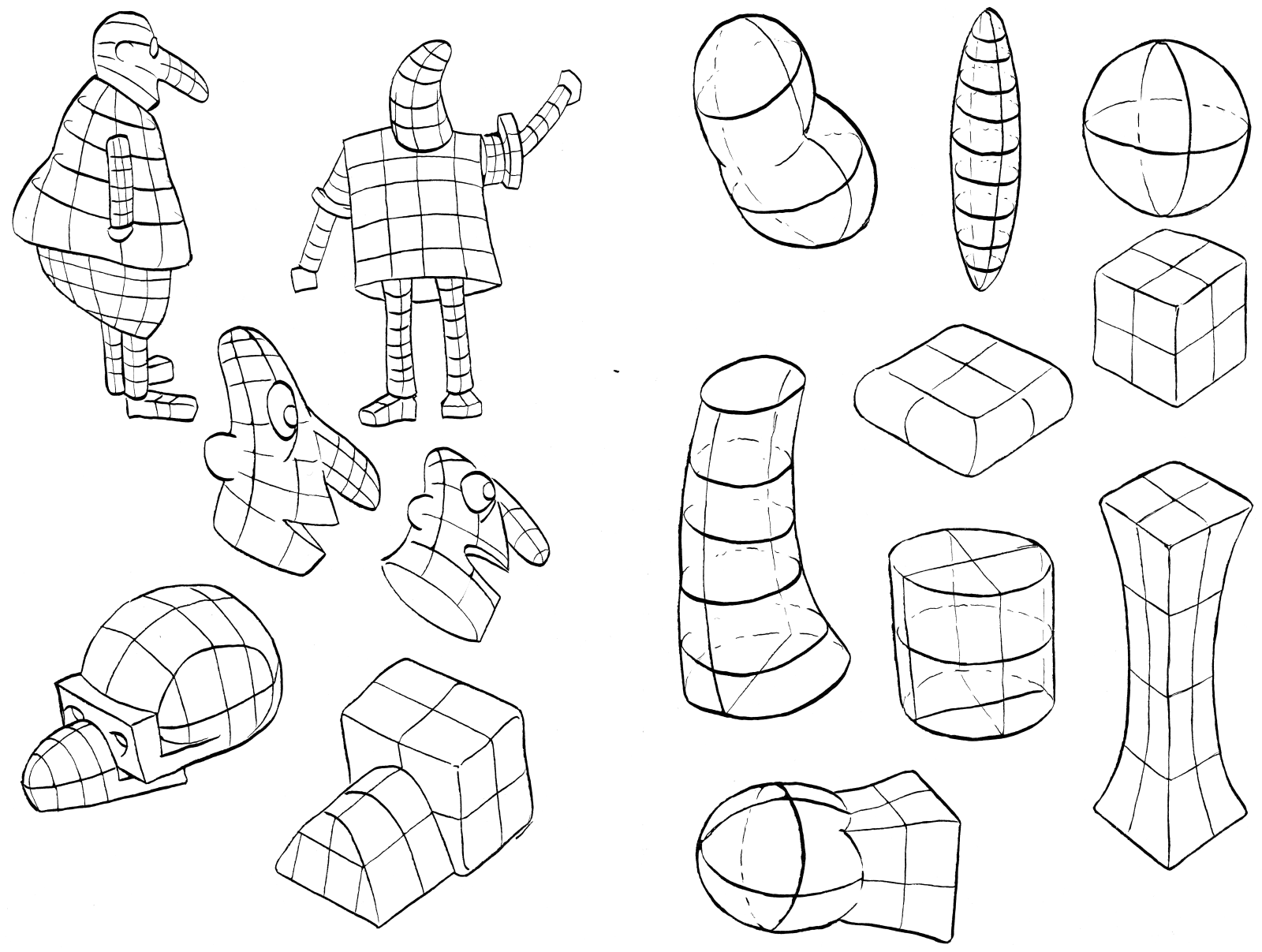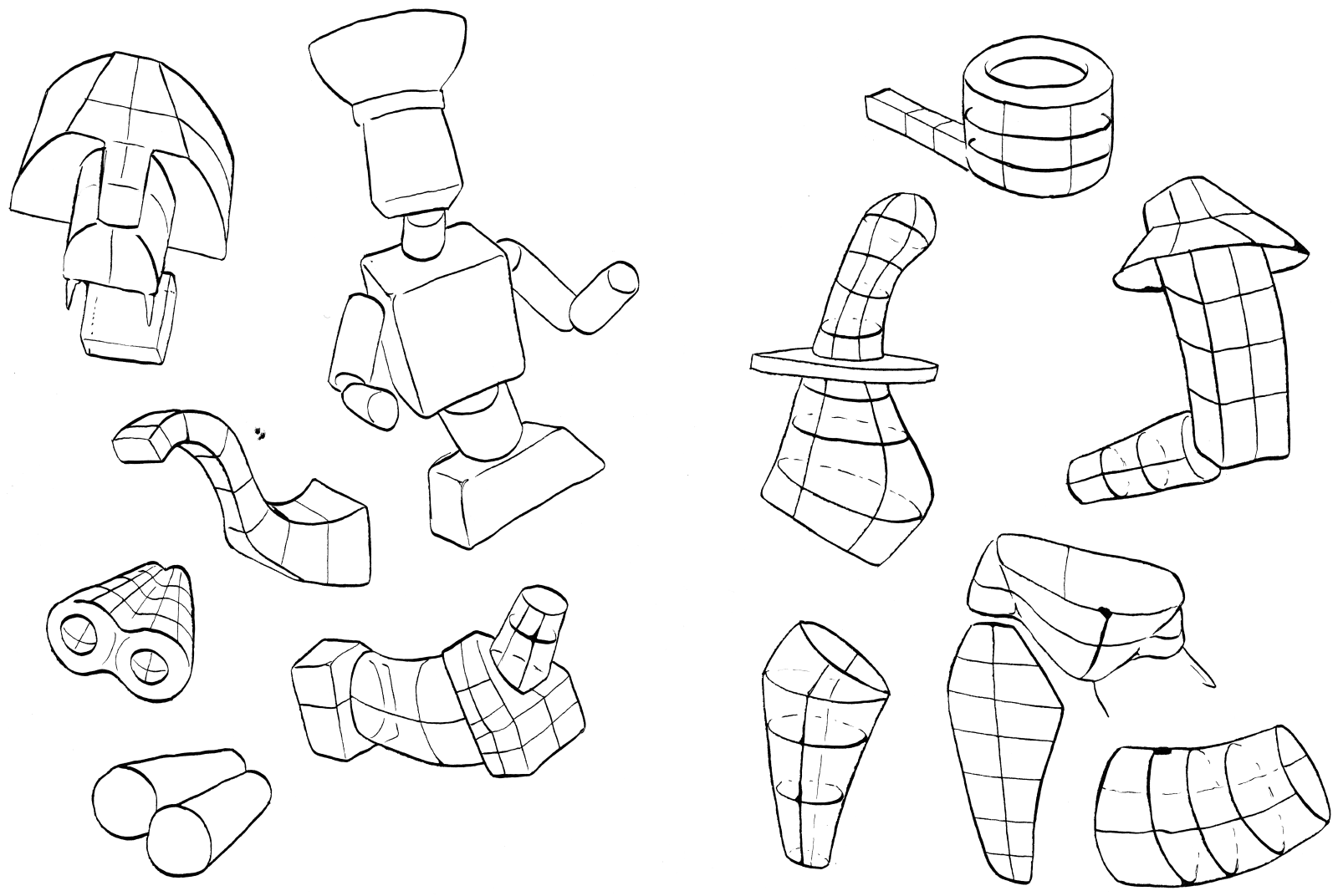
Doing Form Studies So That You Can Rotate Objects And Figures In Three Dimensions
Form studies practice drawing primitive forms like boxes, spheres, cylinders, and cones in any orientation. These forms can then also be deformed, squeezed, and stretched. And they can be combined into more complex forms, blended, or interlocked. All this can be done without any photo reference! It is fun trying to construct, for example, imaginary cartoon characters from primitive forms.
Form studies are a great exercise to place things accurately in a three-dimensional space. I find it way more fun to position these forms in a three-dimensional space without first working out a perspective grid, and it’s fun to try to do it by eye. For drawing, I prefer this over studying the math behind perspective. The drawing from memory exercise trains you to see when things are off. Combined with form studies, this will train you to place believable, perspective-correct forms in a three-dimensional space in any orientation.

You can use the forms in two ways: either create more complex forms from simpler primitive forms, deformed or not. You can create imaginary constructions this way, but you can also look at photo references and, as an exercise, try to work out the underlying form of the thing in the picture.
As starting points, these primitive forms can be used as approximations of more complex forms. After deforming the form, details can be added to it.
Another use is to be able to place objects in boxes. An exercise can be to draw boxes in several different orientations and then place an object or human in those boxes in their different orientations.
Form studies help practice placing things believably in a three-dimensional space and can help place details accurately.
The exercises mentioned in the Dexterity guide are useful for form studies: they help you practice drawing straight lines and circles and ellipses accurately and starting and stopping lines exactly at other lines, which is invaluable when drawing forms.
I have created a repository of 3D models you can view online in most browsers, including your mobile phone.
Related Drawing Workouts
This workout takes you from drawing basic forms to organic forms to doing a form study of a reference image.
Open
Work from 3d models, from observation and memory, imagine what it looks like from another angle and verify, draw from different angles, deform from imagination.
Open
This workout consists of a series of short drawing exercises that improve your hand dexterity, ability to draw circles and ellipses, cylinders, and human poses through a simplified manikin based on a beanie simplification of the human torso.
Open